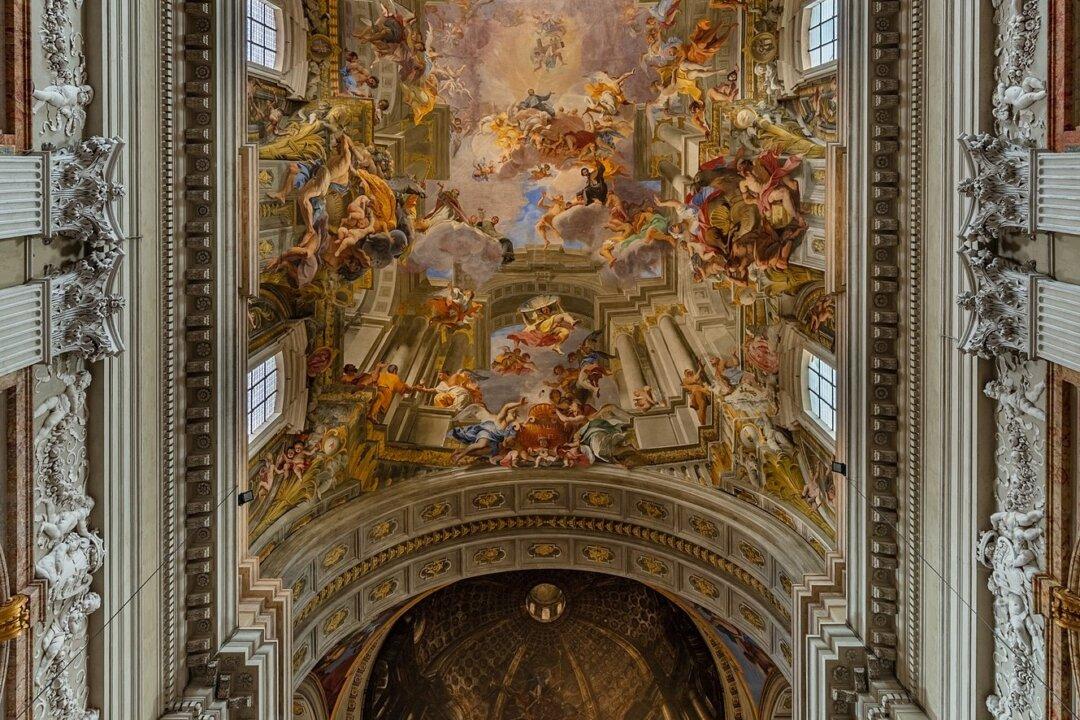When in Rome, look up to the heavens in the nave of the Church of St. Ignatius of Loyola and you’ll be in for a sweet surprise, as the lofty heights of heaven appear as real as you and I.
Yet builders didn’t construct the nave’s dome and vaulted ceiling; lay Jesuit brother Andrea Pozzo (1642–1709) created it entirely with paint and mathematical perspective. Pozzo’s painted ceiling is the best example of “quadratura,” an illusionistic and realistic rendering of architecture and sculpture on walls or ceilings.






